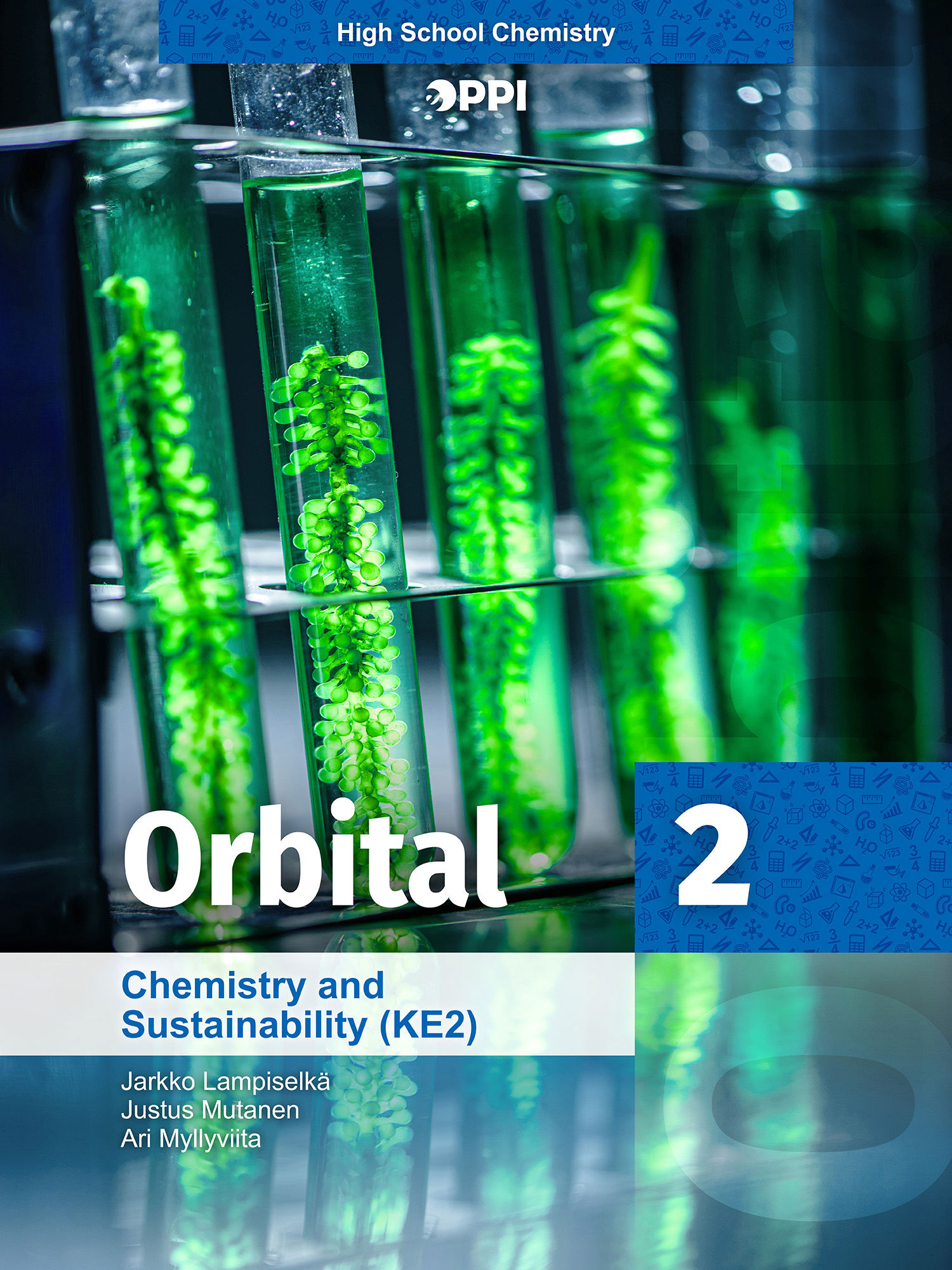
Authors
Jarkko Lampiselkä, Justus Mutanen & Ari MyllyviitaExercises kit’s authors
Jarkko Lampiselkä, Justus Mutanen & Ari MyllyviitaPublisher
Included in packages

-
The study kit contains 21 chapters and 77 exercises of which 10 are in the chapters and 67 in the task exercises.
-
Authors
Jarkko Lampiselkä, Justus Mutanen & Ari Myllyviita -
Exercises kit’s authors
Jarkko Lampiselkä, Justus Mutanen & Ari Myllyviita -
Subject
Chemistry, natural sciences -
Grade
High school -
Course
CH2 Chemistry and sustainability -
Kit's language
English -
Publisher
e-Oppi Oy -
Included in packages
The Orbital 2 e-book covers the second module of upper secondary school chemistry, "Chemistry and a sustainable future". It is one of the two compulsory chemistry modules in upper secondary school.
The Orbital series is a modern learning material for chemistry that encourages the student to think about, investigate, and understand chemistry. The text is designed to captivate the reader. The examples feature important chemical processes and discoveries that are familiar from everyday life. In addition to traditional text explanations, animations, videos and 3D models have also been used to visualise processes.
The tasks follow the new digital final exam model, progressing from tasks that test memory skills through concepts to practical and more challenging tasks. Models and visualisation play a key role in learning chemistry.
Chemistry is learnt by visualising your own thoughts and by presenting them to other students. Discussions help to develop our own thought processes. Modelling uses simulations, but you will also need a pen and paper. Students can freely choose between visualisation methods.
Chemistry is also learnt together. Learning is social in nature, so the material encourages students to work together.
1. To the reader
Lead |
Chapter |
|---|---|
| 1.1. | Foreword |
2. Molecular models and compound formulae
Lead |
Chapter |
|---|---|
| 2.1. |
Molecular models and formulae
Free chapter! |
3. Strong bonds
Lead |
Chapter |
|---|---|
| 3.1. | General bonding principles |
| 3.2. | Covalent bond |
| 3.3. | Ionic bond |
| 3.4. | Metallic bond |
| 3.5. | Experiment |
4. Weak bonds
Lead |
Chapter |
|---|---|
| 4.1. | Dipole-dipole bond |
| 4.2. | Dispersion forces |
| 4.3. | Ion-dipole bonds |
5. Material properties
Lead |
Chapter |
|---|---|
| 5.1. | States |
| 5.2. | Solubility |
| 5.3. | Acidity and basicity |
| 5.4. | Experiments and modelling |
6. Circular economy and green chemistry
Lead |
Chapter |
|---|---|
| 6.1. | Environmental chemistry |
| 6.2. | Green chemistry and sustainable development |
| 6.3. | Circular economy and life cycle approach |
| 6.4. | Reducing emissions |
| 6.5. | Chemistry in society |
7. Appendices
Lead |
Chapter |
|---|---|
| 7.1. | For the teacher |
| 7.2. | Terms and concepts |


